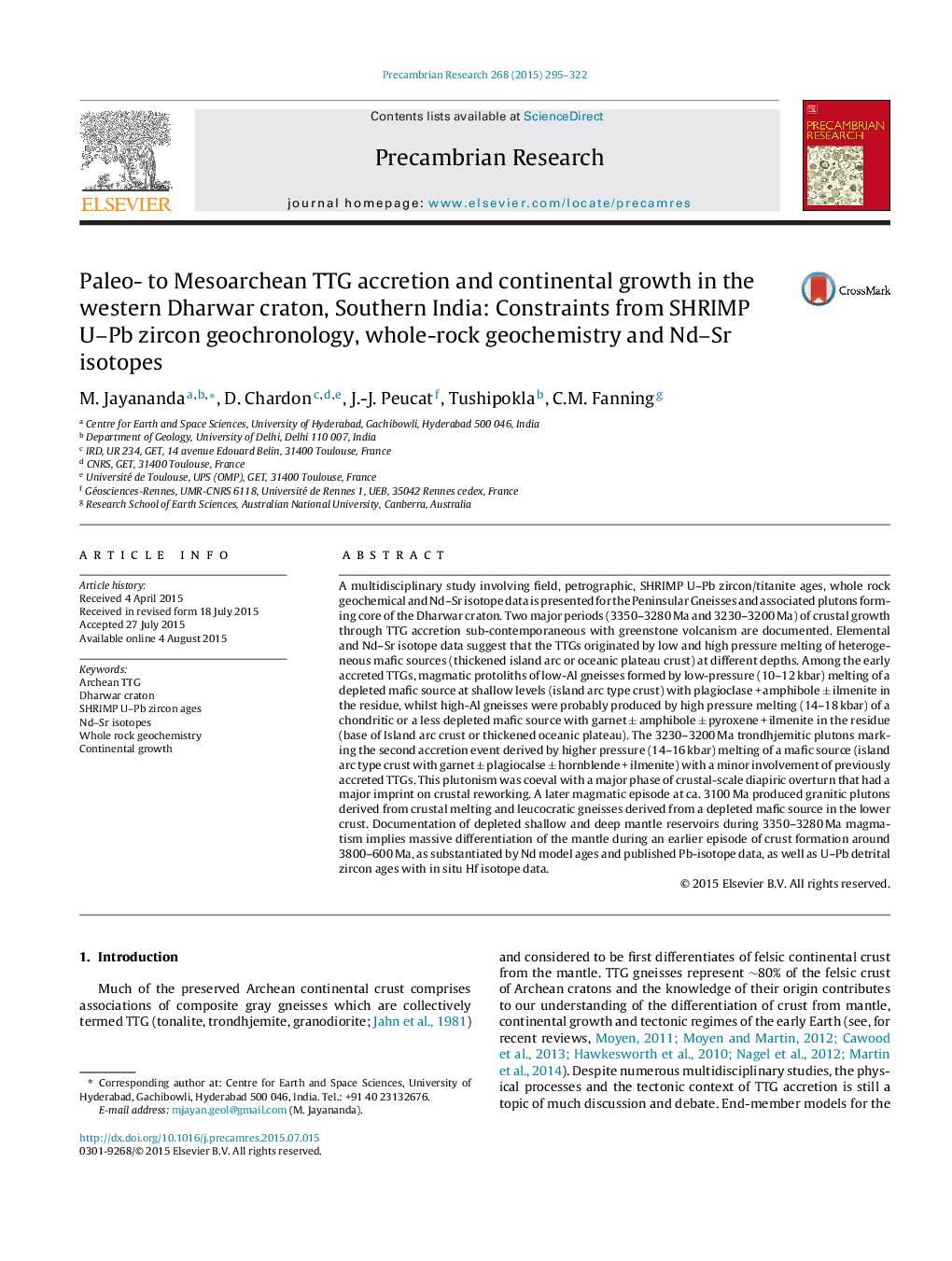| کد مقاله | کد نشریه | سال انتشار | مقاله انگلیسی | نسخه تمام متن |
|---|---|---|---|---|
| 4722641 | 1639607 | 2015 | 28 صفحه PDF | دانلود رایگان |

• U–Pb zircon ages show two episodes (3.35–3.28 and 3.2 Ga) of TTG accretion in WDC.
• Elemental data show that the studied TTGs derived from heterogeneous mafic sources.
• Low-Al TTGs were generated by melting of depleted mafic source at 10–12 kbar.
• High-Al TTGs were originated by melting of undepleted mafic source at 14–18 kbar.
• Nd isotope data shows major juvenile input with minor old crustal influence.
A multidisciplinary study involving field, petrographic, SHRIMP U–Pb zircon/titanite ages, whole rock geochemical and Nd–Sr isotope data is presented for the Peninsular Gneisses and associated plutons forming core of the Dharwar craton. Two major periods (3350–3280 Ma and 3230–3200 Ma) of crustal growth through TTG accretion sub-contemporaneous with greenstone volcanism are documented. Elemental and Nd–Sr isotope data suggest that the TTGs originated by low and high pressure melting of heterogeneous mafic sources (thickened island arc or oceanic plateau crust) at different depths. Among the early accreted TTGs, magmatic protoliths of low-Al gneisses formed by low-pressure (10–12 kbar) melting of a depleted mafic source at shallow levels (island arc type crust) with plagioclase + amphibole ± ilmenite in the residue, whilst high-Al gneisses were probably produced by high pressure melting (14–18 kbar) of a chondritic or a less depleted mafic source with garnet ± amphibole ± pyroxene + ilmenite in the residue (base of Island arc crust or thickened oceanic plateau). The 3230–3200 Ma trondhjemitic plutons marking the second accretion event derived by higher pressure (14–16 kbar) melting of a mafic source (island arc type crust with garnet ± plagiocalse ± hornblende + ilmenite) with a minor involvement of previously accreted TTGs. This plutonism was coeval with a major phase of crustal-scale diapiric overturn that had a major imprint on crustal reworking. A later magmatic episode at ca. 3100 Ma produced granitic plutons derived from crustal melting and leucocratic gneisses derived from a depleted mafic source in the lower crust. Documentation of depleted shallow and deep mantle reservoirs during 3350–3280 Ma magmatism implies massive differentiation of the mantle during an earlier episode of crust formation around 3800–600 Ma, as substantiated by Nd model ages and published Pb-isotope data, as well as U–Pb detrital zircon ages with in situ Hf isotope data.
Journal: Precambrian Research - Volume 268, October 2015, Pages 295–322